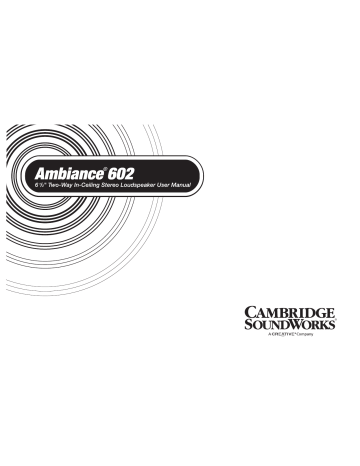


What appears to be a reflection around the 7.5ms point is not from anything in the room, the speakers being sited some 4' above the floor and 5' from the walls for this measurement. (The measurement bandwidth was 30kHz, equivalent to a sampling rate of just under 91kHz.) The shape is typical of a design with a second-order crossover, while the HF ripples are presumably due to a tweeter resonance. Turning to the time domain, fig.2 shows the anechoic portion of the Ambiance's impulse response, 48" away on the tweeter axis, as calculated by the MLSSA software. (Assessed with a 1kHz-centered, 1/3-octave warble tone, the Ambiance is 3dB more sensitive than the LS3/5a, but 5–7dB less sensitive than the Celestion 3 and Monitor Audio 7.)įig.1 Cambridge SoundWorks Ambiance, electrical impedance (solid) and phase (dashed). Its low sensitivity, however, will mean that realistic sound levels will not be within its reach, even with 100W amplifiers. As the impedance only drops below 8 ohms in the upper bass and ranges between 12 and 16 ohms in the treble, the Ambiance will be an easy load for even inexpensive amplification to drive, particularly as the phase angle is also minimal throughout the midrange and treble. Looking first at the speaker's impedance (fig.1, note that the phase angle is incorrectly inverted), the sealed-box woofer tuning is revealed by the peak around 75Hz. ( Stereophile's measuring microphone is a calibrated B&K 4006.) The speakers' impedance phase and magnitude were measured using Stereophile's Audio Precision System One. Regarding measurements, I use a mixture of nearfield, in-room, and quasi-anechoic FFT techniques (using the MLSSA system from DRA Labs) to investigate objective factors that might explain the sound heard.


 0 kommentar(er)
0 kommentar(er)
